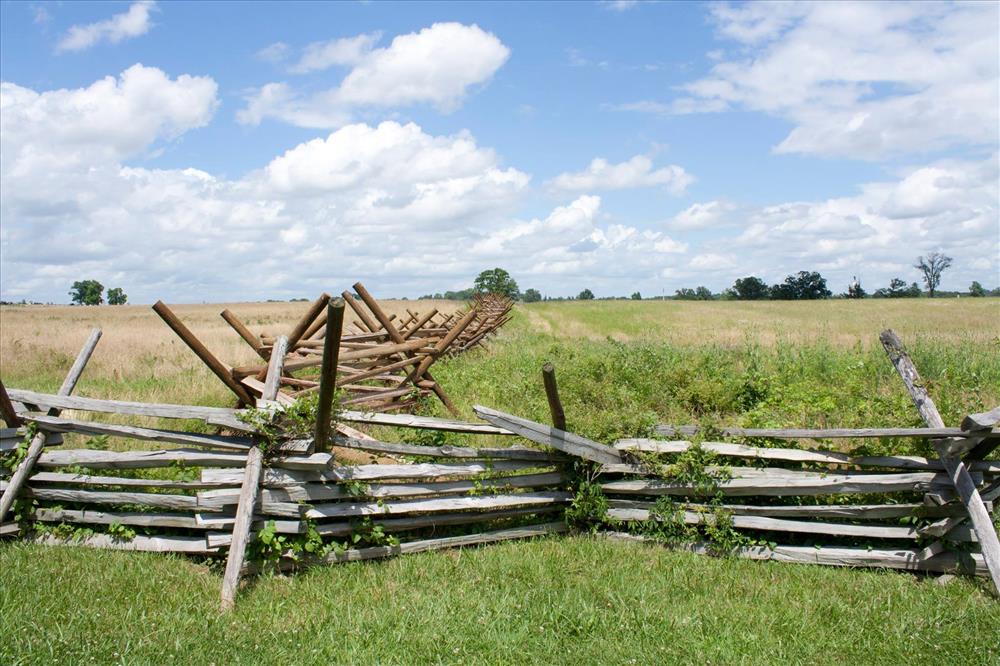News Release

Battlefield landscape, Gettysburg National Military Park
News Release Date: March 5, 2021
Contact: NewsMedia@nps.gov
WASHINGTON — The National Park Service today announced $2,188,052.50 in grants from the American Battlefield Protection Program to protect 225.33 acres at three Civil War and Revolutionary War battlefields. The grants will be used to acquire portions of Brandywine and Gettysburg battlefields in Pennsylvania and Shepherdstown Battlefield in West Virginia.
The Battlefield Land Acquisition Grant program, administered by the American Battlefield Protection Program, provides up to 50% in matching funds to state and local governments to acquire and preserve threatened Revolutionary War, War of 1812, and Civil War battlefield lands through fee-simple and permanent, protective interest acquisitions at eligible properties. Eligible battlefields are listed in the Civil War Sites Advisory Commission’s 1993 “Report on the Nation’s Civil War Battlefields” and American Battlefield Protection Program’s 2007 “Report to Congress on the Historic Preservation of Revolutionary War and War of 1812 Sites in the United States.”
Pennsylvania – Brandywine Battlefield
Recipient: Chadds Ford Township
Land Acquired: 72.23 acres
Project Partners: North American Land Trust and American Battlefield Trust
Amount: $1,883,725.00
Late in the afternoon of Sept. 11, 1777, the American Army under Gen. George Washington was desperately trying to form an effective rear-guard against the British Army along the Brandywine River in southeastern Pennsylvania. After enduring over three hours of constant attack, most of the American Army was in full retreat as British Grenadiers and troops of the British 4th Brigade attempted to cut off their escape. A counterattack of American cavalry, led by Count Casimir Pulaski, and the stubborn resistance of troops under Maj. Gen. Nathaniel Greene slowed the British advance until nightfall, allowing Washington’s Army to withdraw and fight another day while the British Army marched toward Philadelphia and, two weeks later, captured the U.S. capital. Grant funds will be used to acquire and preserve a significant portion of the battlefield where the 4th British Brigade began its attack against Greene.
Pennsylvania – Gettysburg Battlefield
Recipient: Pennsylvania Historical and Museum Commission
Land Acquired: 1.1 acres
Project Partner: American Battlefield Trust
Amount: $ 79,297.50
At twilight on July 2, 1863, James McKnight’s Gettysburg farmhouse was lit up by the intense artillery fire of Captain Greenlief Stevens’ 5th Maine Battery of the Union Army. Firing in support of Brig. Gen. Adelbert Ames’ division on nearby Cemetery Hill, Stevens’ guns helped to slow a Confederate attack and allow time for Union reinforcements to arrive. Facing superior numbers, the Confederates were forced to withdraw from the sloping fields of the McKnight Farm. Grant Funds will be used to protect the McKnight farmhouse and surrounding lands traversed by Union forces in defense of Cemetery Hill during the Battle of Gettysburg.
West Virginia – Shepherdstown Battlefield
Grantee: Jefferson County Farmland Protection Board
Land Acquired: 152 acres
Amount: $225,030.00
Three days after the battle of Antietam, regular troops under the command of Maj. Charles Lovell crossed a shallow ford in the Potomac River to determine the whereabouts of the Confederate Army under Gen. Robert E. Lee. The night before, lead elements of this Union force made contact with the Confederate Artillery and captured four guns before being recalled back across the river. Returning to the ground they had gained only a few hours before on the morning of Sept. 20, 1862, the Union troops were attacked by a larger force of Confederates and forced to withdraw. Grant funds will be used to increase acreage under preservation easement and maintain open-space and agricultural uses.
Learn more about these grants and the American Battlefield Protection Program.
About the National Park Service. More than 20,000 National Park Service employees care for America's 423 national parks and work with communities across the nation to help preserve local history and create close-to-home recreational opportunities. Learn more at www.nps.gov, and on Facebook, Instagram, Twitter, and YouTube.
Last updated: March 5, 2021
